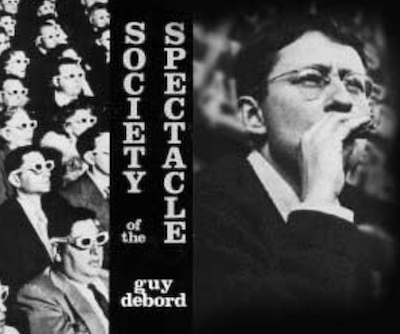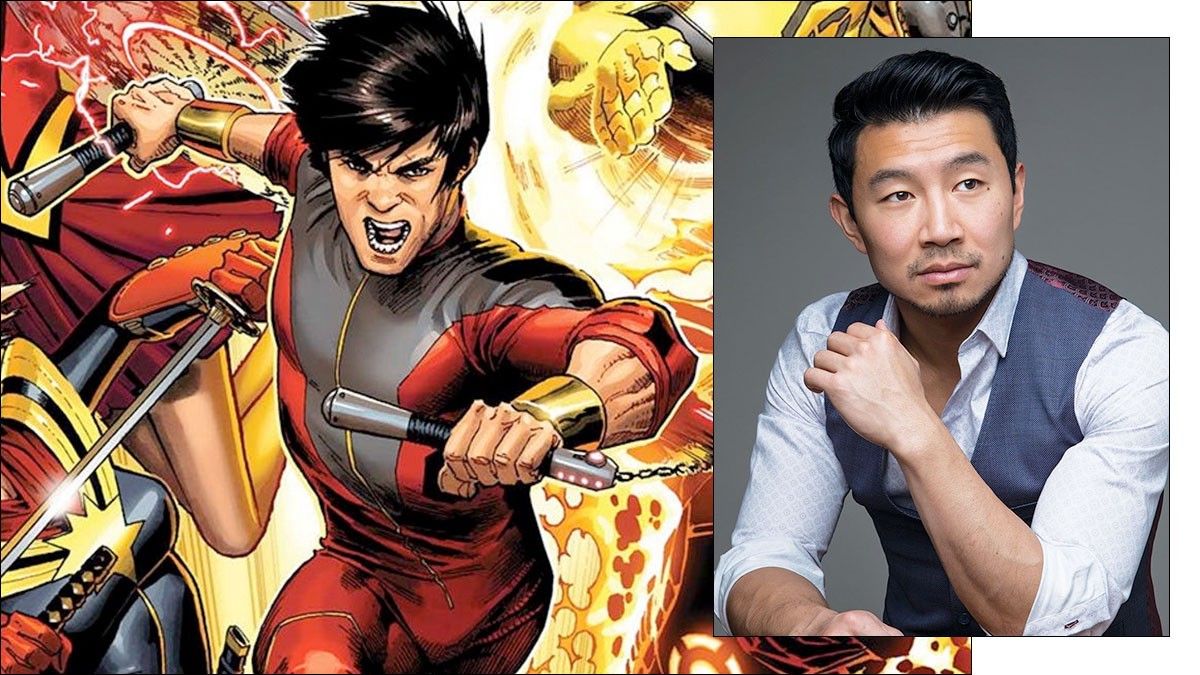Media representation is the siren song of neoliberal capitalism. To see ourselves reflected in the upper echelons of society and to realize the “American Dream” on screen may be empowering, but a reliance on the existing depictions of power still remains confined to the ideology of the dominant culture. Instead of challenging the underlying assumptions of the achievement society, it succumbs to the allure of its imagery. Representation, after all, is pure image; it is an image crafted within a particular cultural and political context that serves to promote a particular ideology. Ultimately, representation that takes place within the institutions of capital will be unable to adequately address the inherent inequalities perpetuated by the capitalist system.
The French cultural theorist and revolutionary Guy Debord wrote in Society of the Spectacle, “the abnormal need for representation [in consumer society] compensates for a torturing feeling of being at the margin of existence.” According to Debord, our lives under the current stage of capitalist development have become increasingly mediated by images, which have perfected the alienation of the individual from other individuals and the dissolution of true community in exchange for an illusory system of false consciousness — the spectacle.

For Asian Americans, who in many ways are still at the “margin of existence” in mainstream consciousness, the over-glorification of media representation reflects our desire for recognition within the cultural and political sphere. However, from who or what are we demanding this recognition? We are not demanding recognition from other people so much as we are demanding recognition from the spectacle itself; we desire the image of political and cultural status rather than the actualization of true self-determination as a community. Media representation reveals its limitations when we realize that acceptance into the mainstream media landscape is not a recognition of the real struggles of our community, but is instead simply a recognition of Asian Americans as a potentially lucrative market demographic.
The real material foundation for the spectacle is capital, and it is this material base which gives rise to the ideological and political superstructure which serves to perpetuate the relations of production in society. There can be no truly subversive or revolutionary media within the superstructure so long as we depend on achieving representation as a part of the spectacle; those who appear to have “made it” have a material interest in preserving the status quo and thus adopt the outlook of the upper class. Media created by the capitalist class will always reflect their class interests, with the ultimate effect of further integrating the individual into the neoliberal achievement society.
The allure of the spectacle is not simply the desire to see ourselves reflected in the images we consume, but also reflects the desire to ascend to the ranks of the elite from which we have long been excluded — it is, in essence, the desire to confirm the American Dream for ourselves. The American Dream only truly exists on screen, it is a spectacular fabrication which serves to mask the actual material causes of inequalities present in society, and reinforces its alienation of the individual from other individuals under the guise of meritocracy. In this way, the spectacle functions as an all-pervasive form of ideology, the basic assumptions about our society that seem to exist beyond critique.

Thus, the current struggle for media representation appears on one level to be a struggle against systemic discrimination, but on another level by demanding entrance into Hollywood’s pantheon as the means to correct this discrimination, we implicitly accept the very system which has perpetuated this discriminatory narrative. While greater Asian American representation in the media may bring us some measure of the recognition we desire, it only further perfects our integration into the spectacle, as we equate our new media presence with having finally validated the ideology of the American Dream. Media representation is merely a salve which cannot remedy the actual cause of our alienation. In fact, we may be more willing to accept our alienation if the millionaires we see on screen have Asian faces.
As long as Asian Americans have been excluded from the screen of mainstream consciousness and dehumanized within the very media we consume, we maintain a kernel of understanding that somehow, despite our hard work and material success, the full realization of the “American Dream” is an illusion still beyond our reach. It is this experience of exclusion that has driven many Asian Americans to create media on their own for their own community, particularly during the “golden age” of Asian American YouTube.
What was so exciting about Asian American YouTube was the new possibilities it created for our own community. Instead of relying on conventional media, here was a platform on which Asian Americans could tell their own stories and craft their own narratives against the mainstream, in a voice that better represented and reflected the actual experiences and struggles of many Asian Americans. And while Asian American online spaces are not perfect, they are a place where creators have the power to define themselves, which has opened up new possibilities for what the Asian American community can become. In contrast, the narratives put forward by mainstream media attempt to define what the Asian American community should be.

This distinction between these two areas of media representation can be found by examining the cultural forms they adopt. I find it interesting that so many of the recent landmarks in Asian American representation within mainstream media adopt the older, traditionally white media forms such as the sitcom, romcom, or superhero movie which have been repurposed to accommodate Asian American faces. Media representation within the spectacle exists on the basis of this ability to repurpose and recuperate, taking those on the “margin of existence” and inserting them into predefined roles with predictable expectations which easily conform to the ideology of the current system. The spectacle cannot create new cultural forms, it can only imitate and redefine them for mass consumption. It insists on conformity even as it superficially celebrates difference. On the other hand, media created in Asian American online spaces cannot be defined by a single cultural form or a single genre.
While online media is not separate from the spectacle, it retains much more possibility for experimentation and innovation in a way that is grounded in the actual experiences of Asian Americans from a wider variety of socioeconomic backgrounds. From the surreal horror-comedy of Tito Please, or the musical explorations of Nahre Sol, to established YouTubers like David So, Asian American online creators like these have adopted very different methods in order to express their creativity and skill in ways which reflect their actual life activity. However, as long as the spectacle — rooted in the material relations of capitalist production — pervades every facet of our society, any media created within its confines will be subject to recuperation into the commodity form in which value is measured according to the accumulation of ticket sales and merchandise, or likes and shares. Ultimately, within the spectacle we are still subject to the ideology of the achievement society which drives us to seek after recognition from the system itself as image, rather than from one another in reality.
However, if we reject our desire for mainstream media representation, how will it still be possible to reach the popular consciousness and change the narrative about Asian Americans from the fringes?
I would argue, instead, that mainstream media does not truly influence our society as much as it actually reflects and reinforces already existing social attitudes. Movies like Crazy Rich Asians or Always Be My Maybe could only have been possible if there was enough confidence in their ability to generate a profit for their production companies. That these movies enjoyed such popular success only reflects the fact that there was already enough popular support for Asian American-centered narratives which had previously gone largely untapped within the mainstream. The recent rise of Asian American stories in the mainstream media has not happened in a vacuum, but is the result of a gradual shift in attitudes towards Asian Americans that has happened outside the scope of the mainstream, not because of it. This shift can be attributed to many factors, from the presence of online Asian American creators and the popularization of online streaming platforms, to the rise in popularity of Asian media, all while in the meantime Hollywood continued to exclude and dehumanize Asian voices. However, despite our community’s prolific creative history, it was not until our breakout onto the mainstream media stage that Asian America was deemed to have “made it.” This moment was not the sign of a radical push for Asian American representation, but rather signified that our community was now ripe for further recuperation within the spectacle. The spectacle operates according to the logic that only what is marketable is valuable — only what is marketable is real.

Within the “unreal reality” of the spectacle, the invisibility that Asian Americans have always felt stems from our actual conditions of alienation, but is perceived as originating from our portrayal on screen. Media representation reveals its limitations as a solution to our desires when we realize that images alone will not change the material inequalities perpetuated by the actual conditions of society. When Asian Americans, excluded from the media, perceive that kernel of understanding that “something isn’t right,” there is the possibility for that understanding to progress into a real critique of the system. However, our further representation within the spectacle might erase that possibility, and only smother us underneath yet another layer of false consciousness. Exposing the spectacle for its empty ideology does not mean a retreat from our current cultural struggle, but rather necessitates a radically different approach to media and the organization of media creation.
What then is to be done? Is there any way to escape the totality of the spectacle? Because the spectacle has its foundation in the capitalist mode of production, any truly subversive media must also be rooted in anti-capitalist practice, which begins with class consciousness. Debord writes,
“For the society of the spectacle to be effectively destroyed, what is needed are people setting a practical force in motion. A critical theory of the spectacle cannot be true unless it joins forces with the practical movement of negation within society; and this negation, which constitutes the resumption of revolutionary class struggle, cannot for its part achieve self-consciousness unless it develops the critique of the spectacle, a critique that embodies the theory of negation’s real conditions — the practical conditions of present-day oppression — and that also, inversely, reveals the secret of negation’s potential.”
A theory and practice of negation for Asian Americans must begin with a rejection of mainstream media representation rather than holding on to our spectacular aspirations. We must begin with a refusal to abide by the logic of the achievement society, with its apotheosis of image over reality. If we are to overturn the spectacle, let us begin by transforming the concrete content of our life activity in order to give rise to new forms of expression.
A revolutionary Asian American media must be the product of our own making, and must reflect our lived realities in active, organized struggle against oppression, rather than upholding fantasies of an American Dream forever beyond reach. Asian America today contains the highest amount of wealth inequality of any community in America, which is reflected in the disparity of voices featured in Hollywood versus those found on the fringes of the media landscape. However, online media, despite its ability to foster the voices of a much more diverse range of people, falls short in that it is still rooted in the logic of the spectacle.
When Debord writes that “all that once was directly lived has become mere representation,” this should move us not to confine our cultural struggle to the realm of image, but to ground our actions in the transformation of everyday life. What is needed then are alternative ways of organizing ourselves, from employee-owned businesses and worker’s co-ops to political agitation and discussion groups, in order to ground the production of media in anti-capitalist practice. Media presence for Asian Americans is thus not the goal, but a tool which gives power to those on the fringes of society. We need to create real communities where once there were only consumers.
For our community to be able to take an active role in transforming society, we must acknowledge that it is only at the “margin of existence” that real revolutionary change can occur. In the shadow of an ever-growing labor movement here in America, it is of utmost importance that a new, vibrant Asian American political consciousness can develop. If we are to change the people’s perspectives of Asian Americans, we need to stand up for our own community and add our unique voice to the whole chorus of all the oppressed and alienated against capital. We must understand ourselves not only as Asian Americans, but as part of a class with an economic basis which is capable of comprehending the totality of capitalist society. And it is this class consciousness which will shatter the illusion of the spectacle — the American Dream, meritocracy, and the achievement society — to expose the real contradictions contained within.
As Asian Americans, what are our struggles, what are our hopes? Are our hopes as narrow as simply achieving individual material success within neoliberal society, being content to believe that more representation within the spectacle will somehow bring us greater political and cultural power? Will we ignore the real struggles of working class and impoverished Asian Americans, and indeed all working class and impoverished people, in exchange for gentrified boutique retail establishments and restaurants? Will we choose to ignore the racist and imperialist history of America and instead believe the lie that “if you just work hard enough you can make it”? If our hopes are confined to the illusory aspiration of climbing the endless ladder of neoliberal achievement, then we will only ever be able to look down on others or look above to a glass and bamboo ceiling onto which images of our American Dream are projected.

Comments powered by Talkyard.